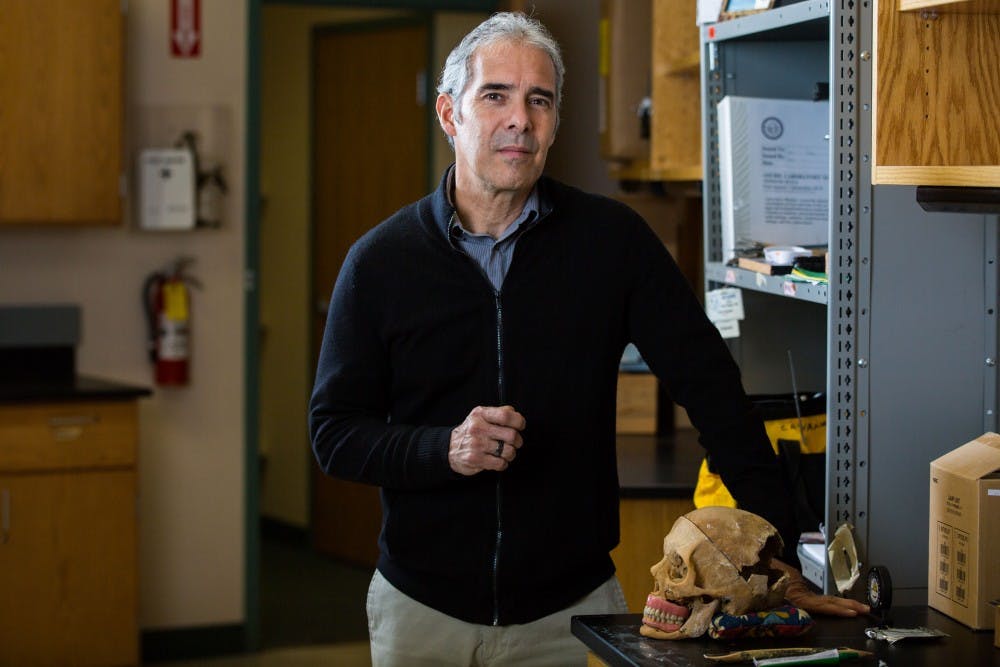It's a nightmare for most people — losing a loved one and never discovering what happened to them. That nightmare, however, is a reality for over 1,300 Arizona families.
The issue of unidentified persons is bigger than many people realize. However, Mathematical and Natural Sciences professor Anthony Falsetti and his wife Catyana, a forensic artist, started a project with intentions of solving some of these cases.
"The Unidentified Persons Project is an effort to gather even more information about the skeletal remains of unidentified people," Catyana said. "There are over 1,300 unidentified people around medical examiners' offices in Arizona and over 40,000 around the United States."
According to the project's PitchFunder site, the project will work to make 3D scans of unidentified remains at coroners' offices and medical examiners' offices around the country.
In October, Anthony got a call from a friend saying there was a woman who claimed to have a few missing persons files that he may be interested in looking into. He went to meet the woman and discovered that "a few" was a bit of an understatement: The woman had seven filing cabinets full of files.
These seven cabinets led the pair to start the Unidentified Persons Project at ASU.
After going through and organizing the files alphabetically, the pair decided to utilize the information to double check the accuracy of the national database.
"The ultimate goal of the project is to compare our digital database with the national online database for overlaps or missing info in the national database," Anthony said.
Members involved in the project are currently waiting on approval to digitally access the national database. If they do not get this access, they said they will do the work by hand.
Digital access, however, will speed up the process and allow them to hopefully be in the swing of things by fall 2016, Anthony said.
Along with digital access to national databases, 3D scanners will be vital to the success of the project, according to the project's PitchFunder site. These scanners will allow the team to take the skulls of unidentified persons and formulate an estimated version of the facial structure the person would have if they were still alive. This way, friends and family members of the person may help identify them, even long after their death.
Anthony said the team hopes to travel around the country to help alleviate the unidentified persons issue once they get approval and funding for the scanners.
Students are being trained to use the scanners and navigate the digital database so they can accompany the Falsettis on their trips around the country.
Anthony said he is currently talking to people in San Francisco, San Diego and Wisconsin, planning work that can be taken on as soon as the scanners are available.
Catyana works as a forensic artist, and will be an essential source for the success of the project once the scanners are funded.
"For the purposes of identifying decedents, we create an approximation of a face from the skeletal remains of a person, or an image of a person, who is only moderately decomposed (post-mortem image) from the photos and documentation provided," she said. "We create these images to help spur the interest of someone who may have known the person in life."
A few members of the ASU community have gotten involved with the project. Deanna Dent, an ASU alumna who is now a photographer and videographer for ASU Media Relations, said she got involved after she saw Catyana's work.
"I photographed the Falsettis in their lab," she said. "I met Catyana and was intrigued about how she used photoshop to make her artist renderings working from, what seemed to me, so little."
Dent now works with the program, helping with fundraising and photography.
Five ASU students are currently working with the Unidentified Persons Project as well. Two help with the fundraising, and three help with the organization and analysis of case files. They also have the opportunity to learn from the forensic anthropological analysis done by professionals working on real cases.
Forensics and anthropology junior Kori Dowell is helping with fundraising for the project, and will be scanning remains to help create a facial recognition center at ASU once the scanner is available.
"There is nothing better than hands on experience, and this has given me an opportunity to have experience in the field I want to get into," Dowell said.
Related links:
ASU forensics team earns spot in national tournament
Devils of Arizona State - West campus
Reach the reporter at aegeland@asu.edu or follow @alexisegeland on Twitter.
Like The State Press on Facebook and follow @statepress on Twitter.




